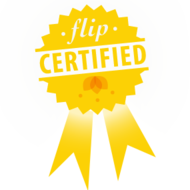Tuesday, May 8, 2012
Way More Than Just the "Funnies"
When I was growing up (which was not that long ago as I always remind my students), the only comics in my world were the ones in the Sunday paper that we called "the funnies." Today, it is an entire form of literature. Whether you call it a comic or a graphic novel, kids are consuming them like crazy, so you might as well explore the possibilities.
I'm a little late on this, but this past Saturday was Free Comic Book Day. All over the nation, comic book stores were giving away comics to encourage readership. You can check out the official site here. I am pleased to report that our school had many students participate at their local comic store.
Graphic novels happen to be the preferred genre for many of our students. New research about the effectiveness of graphic novels in improving literacy for struggling readers seems to come out each year. Finally, some of the highest grossing movies and even some critically-celebrated films of the past few years have been based on comics and graphic novels. It seems like its time for educators to get with the times!
Our library has an extensive collection of graphic novels, ranging from old fashioned comics to manga and reinterpretations of classics. Local libraries are also jumping on board, so they should be readily available and inexpensive or free for students and teachers.
As I have discussed in previous posts, it is often helpful to provide students with reading differences with some background information before reading. There are countless graphic novels in print that tell famous stories ranging from Mary Shelley's Frankenstein to Shakespeare. Many graphic novels have enough substance to stand alone as the primary literature for a unit of study, but they could also be used as a learner-friendly supplement to another book.
This year in the sixth grade, we purchased a series of graphic novels about ancient Greek and Roman mythology focusing on the stories of Zeus, Athena and Hera. George O'Connor's series, Olympians, was hugely popular in our reading classes and students even begged to borrow the other titles in the series. O'Connor also has a website packed with teacher resources, student activities and access to some online material and his blog.
There are graphic novels out there for every age group and ability level and it is worth exploring the potential of this format. Educators have long embraced any subject matter or format that engages student interest and it seems that these comics and graphic novels are the current wave.
Below is a list of recommended graphic novels:
American Born Chinese, Gene Luen Yang (M, H)
Persepolis, Marjane Satrapi (H)
Olympians Series, George O'Connor (E, M)
Nursery Rhyme Comics, Chris Duffy (E)
Coraline, Neil Gaiman and P. Craig Russell (M)
The Legend of Sleepy Hollow, Bo Hampton (M)
Thoreau at Walden, Henry David Thoreau and John Porcellino (M, H)
Deogratias: A Tale of Rwanda, Jean-Phillippe Stassen (H)
E = Elementary Grades
M = Middle Grades
H = High School Grades
A more complete list can be found on the website of the Cooperative Children's Book Center out of the University of Wisconsin-Madison.
Subscribe to:
Post Comments (Atom)









0 comments:
Post a Comment